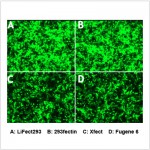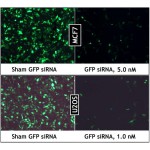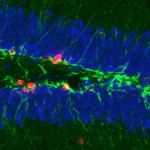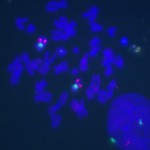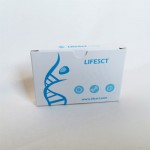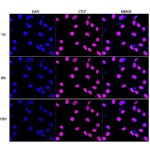| 产品优势: | • Bio-degradable after endocytosis • Exceptional high titers of virus production • Equally good for very long DNAs (>89 kb) • Equally good for both single DNA transfection and multi DNA co-transfection • High levels of recombinant protein production • Simple & robust transfection procedure • Very affordable |
| 描述: | Based on our proprietary polymer synthesis technology, PeneFect™ Transfection Reagent is formulated as a biodegradable polymer based DNA transfection reagent that ensures effective and reproducible transfection on HEK293, COS-7, NIH-3T3, HeLa, CHO and a broad ranges of hard-to-transfect mammalian cells. PeneFect™ reagent is able to immobilize DNA migration during electrophoresis at very low concentration and form transfection complex within 5 minutes at RT. A remarkable feature of the reagent is the rapid and complete degradation of polymer after transfection complex endocytosis , leading to much less cytotoxicity. PeneFect™ reagent, 1.0 ml, is sufficient for ~667 transfections in 24 well plates or ~333 transfections in 6 well plates, providing a very affordable alternative to the leading products for transfecting a variety of commonly used and hard-to-transfect mammalian cells. |
| 组分: | 1. PeneFect™ Transfection Reagent: 1 ml |
| 储存条件: |
At 4 °C |
| 文档: | General Protocol Protocol for Suspension 293 and CHO Cells Protocol for Lentivirus Production Protocol for rAAV Production |
成功案例
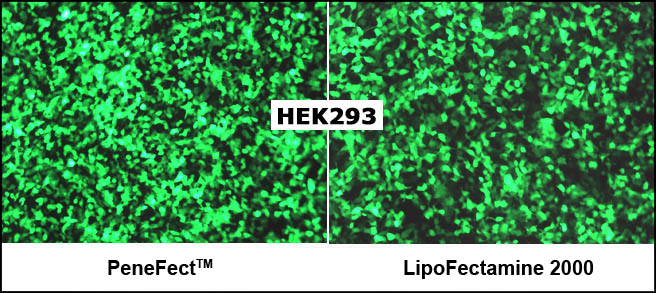
A comparison showing transfection efficiency of PeneFect™ reagent vs. a leading product, Lipofectamine 2000 on HEK293FT cells.
HEK-293T cells were transfected with GFP vector (pEGFP-N3) by PeneFect™ (left panel) and Lipofectamine 2000 (right panel) respectively. The cells were visualized by Nikon Eclipse Fluorescence microscope 24 hours post transfection
A comparison showing transfection efficiency of PeneFect™ reagent vs. a leading product, Lipofectamine 2000 on HepG2 cells.
HepG2 cells were transfected with GFP vector (pEGFP-N3) by PeneFect™ (left panel) and Lipofectamine 2000 (right panel) respectively. The cells were visualized by Nikon Eclipse Fluorescence microscope 24 hours post transfection.


